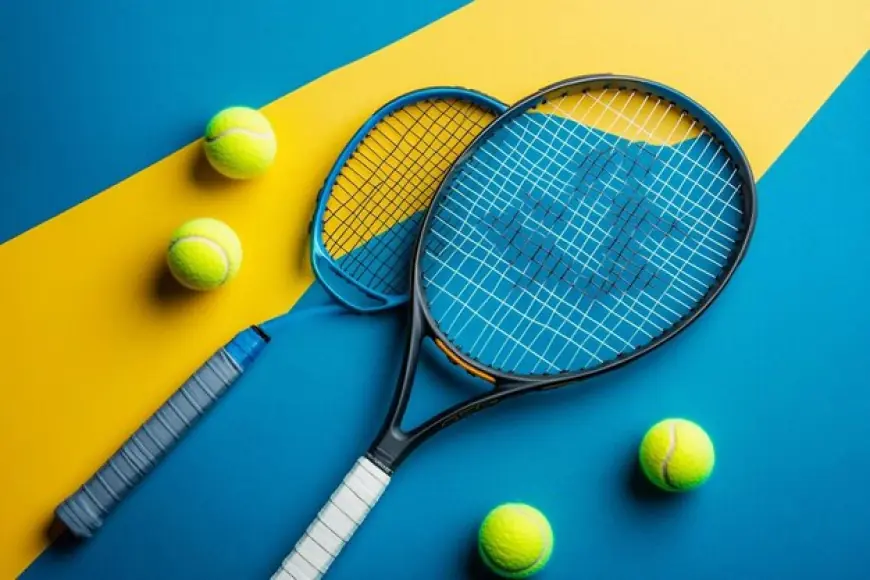Choosing the Perfect Tennis Racquet: A Beginner’s Guide
Tennis is a sport that combines the qualities of speed, precision, and strategic thinking, but without proper equipment, success would be impossible. For the gear involved, the most essential piece of equipment would be your racquet. As an amateur, it can be overwhelming to see the numerous choices in the tennis racquet market. There are so many brands, materials, head sizes, and string tensions that may overwhelm one in this vital decision. However, knowing the essentials of a racquet and what suits your game will make the process less complicated.
Here's a step-by-step guide to help you decide on the right first tennis racquet. If you are starting or wish to upgrade from a basic model, this article will guide you through a more informed choice. Let's dive in!
Know Your Playing Style
-
Baseliners typically hover close to the baseline and use very big, powerful groundstrokes. If you are this kind of player, you will require a racquet that's stable enough for such shot production plus more than ample power as well as a larger sweet spot. A racquet that is marginally heavier with a bigger head size will make you produce power on your groundstrokes.
-
Serve-and-volley players prefer serving and moving forward to the net as quickly as possible to intercept and volley the ball. For such a play, you will prefer a light racquet that can move easily about the court, particularly at the net. This racquet should have a small head size and stiff frame for control on quick, precise volley.

-
All-court players combine both baseline and net playing. They need racquets that balance between power, control, and maneuverability. A player generally seeking an all-court player often seeks a mid-range head size and a medium weight, which allows flexibility both in lengthy rallies as well as quick exchanges at the net.
Picking the Right Head Size
-
Small head sizes are ideal for advanced players who want maximum control. There will be a smaller amount of room for error, meaning you will need to clean up the ball so that you do not hit mishits. Typically, it is better to go for a larger head size for beginners.
-
A mid-size head size would be between 95 and 105 square inches, providing a good balance of power and control. It is an extremely safe choice for the intermediate player or those who want just a little more.
-
Large head sizes of 105-115 square inches offer more power with a larger sweet spot and much more forgiving off-center hits. They're great for the beginner as well because the lack of skill in technique has not yet become an issue.
-
Oversize heads 115-135 sq. inches: The biggest, yet most forgiving, these racquets offer the greatest power and large sweet spots. Overall, these are good racquets for beginners because they help support less-than-perfect shots.
Selecting the Right Racquet Length
The most common length for any average racquet user is 27 inches, ideal for a balance of power, control, and maneuverability. It is perfect for beginners, especially beginners who want a racquet that's easy to handle but won't stop short of performance.
Longer racquets—meaning any rackets of 27.5 inches or more—provide additional length on groundstrokes, as well as additional punch on serves. The drawback of increased length is that it can make the racket somewhat difficult to handle up at the net. For most beginning players, though, the extra length will be a moot point: most racquets will be standard length.
The Importance of Racquet Weight
-
Lightweight racquets (250-280 grams): They are much easier to swing and provide more maneuverability. In this way, they would be excellent for beginners and, if not too heavy on the arm and wrist, would make it much less stressful to develop good techniques without risking any injury.
-
Medium-weight racquets (280-310 grams): They weigh between 280 and 310 grams and deliver a balanced mix of power and control. They are often the racquets of improving players who have developed some strength and want to hone in on their games.
-
Heavyweight racquets (310+ grams): They are heavier racquets weighing above 310 grams, having greater stability and control mainly when volleying or during the serve but requiring more force and good technique to handle them properly, hence more suited for more advanced players.
Racquet Material and Construction
Graphite is light but tough and offers good power and control. Graphite is used the most in tennis racquets, and most beginners and intermediate players use graphite racquets.
Aluminum is inexpensive and lightweight, but somewhat short of power and control compared to graphite. It tends to turn up in entry-level models and is a good option for the absolute beginner.
A composite material combines graphite with fiberglass and Kevlar in order to increase both durability and comfort and add power.
Final Thoughts:
Selecting the correct tennis racquet store for a beginner is confusing, but if one knows about the key factors, one can make the right choice, which will enable him or her to achieve much more than the estimated level. Take your time and try on different models if possible. Then you have the racquet that feels best for you.

 Ethon
Ethon 










